BREAKFAST CEREALS HIGH IN FIBRE
Breakfast is the first meal of the day, and eating high fibre cereals for breakfast may affect how you feel for the rest of the day and your long-term health.
Dietary Fibre is the indigestible portion of grains that passes through us. It is needed for good digestion, toxin elimination, preventing diabetes, supporting heart health, balancing gut microflora, and helps us stay fuller for longer.
Humans need between 20 to 30g of dietary fibre each day, and eating fibre rich foods for breakfast is a big step towards reaching the daily fibre quota. On average, people in the U.K.only consume 14g of fibre per day.
Don’t just rely on one type of grain; mix them up, experiment, and try different grains you’ve never had before.
LIST OF HIGH FIBRE CEREALS
♦ Wheat
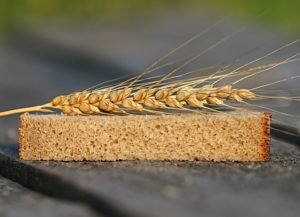 Wheat is arguably the most important grain in the world. It is the most widely consumed food globally and is used as the main food staple by more than one-third of its population.
Wheat is arguably the most important grain in the world. It is the most widely consumed food globally and is used as the main food staple by more than one-third of its population.
While it is a fantastic fibre rich food, it is often made into products lacking in most of the original fibre.
As whole wheat is processed into white flour, much of the fiber or fibre, vitamins, minerals and essential fatty acids are lost in the bran.
While wheat bran comprises 50% dietary fibre, white flour only contains approximately 2%, and whole wheat flour has 15%. So the type of wheat that you eat will affect the overall fibre content greatly.
For the full benefit of high fibre cereals, use whole wheat or wheat bran cereals.
♦Corn
Corn has been used as a food staple for the last 5000 years, dating back to ancient North American indigenous tribes and Mexicans. It provided an important food source of B vitamins, which were lacking in other foods, and was a useful fibre rich food that could be consumed as a cereal.
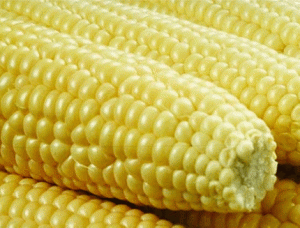
When thinking of corn cereals, usually, corn flakes come to mind. These have been processed to contain very little dietary fibre (just over 1g per serving).
Corn flakes quickly spike blood sugar levels with no dietary fibre to slow down digestion and gut absorption.
For A Better High Fibre Food, try Cornmeal.
Cornmeal is made from dried corn that has been ground up and can be made into a hot cereal the same way you make porridge. When prepared in this fashion, corn cereal provides up to 9g of dietary fibre per serving.
Corn is also high in vitamin C, E, B1, B5, B9 and lutein —
Lutein is a yellow antioxidant that research shows can be beneficial for eye and brain health.
♦Rice
Rice is the most widely consumed grain in Asia, and as a high fibre cereal is becoming more common in Western countries. But the amount of fiber in rice depends on the type of rice you are eating.
Rice puffs, often in the form of cocoa puffs, are widely consumed by children in Western countries. Still, these cereals contain only highly processed rice which has lost all its dietary fibre, minerals, vitamins and essential fatty acids. All that is left is a high carbohydrate cereal that may contribute to obesity if eaten regularly.
Even white rice cooked at home is empty of most of its original nutrition.
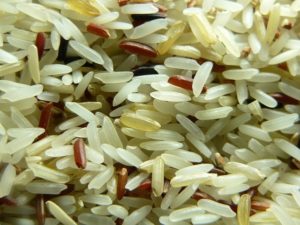
Brown rice, which has not been refined, contains 4g of dietary fibre per cup, along with protein, vitamin B1, B2, B3, B6, minerals, trace elements and rice bran oil.
Various studies into brown rice and rice bran oil have shown that, like oats, they can lower high cholesterol and blood triglycerides. For your high fibre cereals, purchase whole rice flakes, which (when made from brown rice) should contain 2 to 4g of dietary fibre per serving.
♦Oats
Oats are one of the most popular high fibre cereals consumed around the world. Though long considered old-fashioned (most of the oats in the U.K. are grown just to feed livestock). Oats are now making a come back in the Western world as news of their health-promoting qualities spreads.
As well as being high in dietary fibre or fiber it is also about the type of fibre found in oats.
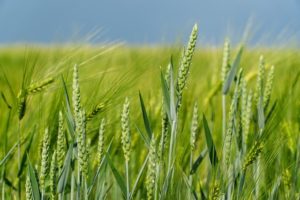
––beta-glucan is the type of fibre found in oats that is very useful for reducing high cholesterol and blood triglycerides.
According to Rgia A Othman, PhD, and other researchers from the University of Manitoba in Canada, anyone who consumes at least 3g of beta-glucans each day may experience a 5 to 10% reduction in total cholesterol, LDL cholesterol and blood triglycerides.
It is thought that fats in the digestive tract bind to beta-glucan and are carried through the bowels and out of the body along with it. Oats also provide good amounts of magnesium, calcium, manganese, selenium, and B vitamins.
♦Quinoa
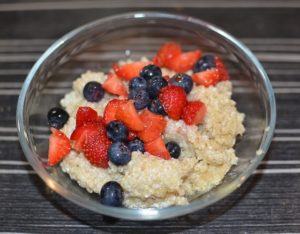
A single serving of quinoa cereal will contain approximately 5g of dietary fibre, along with 8g of protein (containing all of the essential amino acids) and some iron, magnesium and calcium.
Quinoa is unique amongst the other grains. Though technically a seed, it is cooked and prepared like grains and made into hot cereals or flour. More expensive than most other cereals, quinoa is also more nutritious when compared to other cereals high in fibre.
Quinoa makes a perfect breakfast for vegans and vegetarians who lack protein and iron or for anyone requiring a cereal high in fiber and protein. Quinoa is a great high fibre breakfast choice, rather than eating other high fibre low sugar breakfast cereals.

